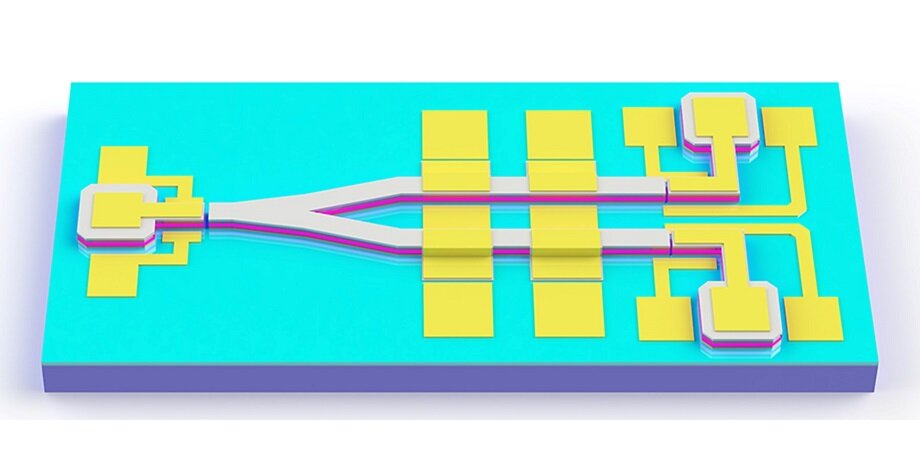
In the realm of photonics, the integration of multiple optical devices onto a single substrate holds immense promise for a wide range of applications. This revolutionary approach, known as photonic integration, offers remarkable advantages, including reduced size, cost, and power consumption. Among the major integration technologies in photonics, two stand out: indium phosphide (InP)-based photonic integration and monolithic silicon photonics. Each technology has its unique strengths and weaknesses.
InP-based photonic integration is widely recognized as a reliable and comprehensive active–passive platform. However, it faces limitations in terms of yield and substrate size. On the other hand, monolithic silicon photonics boast excellent passive performance, temperature-insensitive modulators, and compatibility with complementary metal oxide semiconductor (CMOS) fabrication. Yet, the lack of a light source has hindered the development of this technology.
Excitingly, researchers have proposed a groundbreaking active–passive photonic integration scheme that showcases a remarkable photonic integrated circuit chip.
As reported in Advanced Photonics Nexus, this chip combines a light source, modulator, photodiode (device that converts light into electric current), waveguide (channel through which light travels), and Y-branch splitter, all based on a gallium nitride (GaN)-on-silicon platform. What sets this approach apart is that all active devices, including the light source, modulator, and photodiode, are built on the same ultraviolet InGaN/AlGaN multiple quantum-well (MQW) structure. This unique feature significantly reduces fabrication complexity and cost.
To bring this concept to life, the researchers designed the photonic integrated circuit chip based on the GaN-on-silicon platform, utilizing III-nitride epitaxial layers grown through metal organic chemical vapor deposition. The monolithic, top-down approach builds III-nitride transmitters, modulators, waveguides, beam splitters, receivers, and monitors on a conventional GaN-on-silicon wafer and does not involve regrowth or postgrowth doping.
The researchers characterized the resulting chip extensively from various perspectives to validate the effectiveness of this innovative photonic integration scheme. Key results indicated that a higher reverse bias voltage applied to the modulator led to increased light absorption, as caused by changes in the absorption coefficient.
This distinctive modulation effect was reflected in the receiver’s photocurrent changes. The test system demonstrated negligible cross talk, and the isolation between the light source and modulator on the same waveguide, achieved through p-contact layer separation, proved sufficient for optimal system performance.
The system successfully transmits and processes data using light. By employing direct and indirect modulations within a single light path, the researchers simultaneously transmitted two types of data or encrypted one modulation signal’s data transmission with another modulation.
Lab leader and senior corresponding author Yongjin Wang of the Peter Grünberg Research Center at Nanjing University of Posts and Telecommunications says, “Looking ahead, with further advancements in III-nitride etching accuracy, the proposed integration scheme holds tremendous potential as a competitive solution for next-generation photonic integration, particularly in the sensing field, where high integration density is not a critical requirement.”
More information:
Jiabin Yan et al, Complete active–passive photonic integration based on GaN-on-silicon platform, Advanced Photonics Nexus (2023). DOI: 10.1117/1.APN.2.4.046003
Citation:
Photonic integration: Transforming the future of chip-scale applications (2023, June 21)
retrieved 21 June 2023
from https://phys.org/news/2023-06-photonic-future-chip-scale-applications.html
This document is subject to copyright. Apart from any fair dealing for the purpose of private study or research, no
part may be reproduced without the written permission. The content is provided for information purposes only.
Denial of responsibility! SamacharCentrl is an automatic aggregator of Global media. In each content, the hyperlink to the primary source is specified. All trademarks belong to their rightful owners, and all materials to their authors. For any complaint, please reach us at – [email protected]. We will take necessary action within 24 hours.

Shambhu Kumar is a science communicator, making complex scientific topics accessible to all. His articles explore breakthroughs in various scientific disciplines, from space exploration to cutting-edge research.

